Last week, YIMBY featured a look at some of the highest and most expensive real estate in the Western Hemisphere, scattered across the uppermost reaches of the Manhattan skyline. Today, we have an interview with a developer whose condominiums often attain similar price-points, even though they’re normally located much closer to street level. YIMBY sat down with DDG’s CEO Joe McMillan to discuss the firm’s current slate of work, their in-house design and development process, and the finer details on major sites like 180 East 88th Street on the Upper East Side, and challenging ones, like 100 Franklin in Tribeca.
YIMBY in bold.
Can you give an overview of DDG’s current pipeline?
Over the past several years we have expanded to other major markets outside of New York, including California and Florida. We’ve been one of the more active developers in New York and have projects underway in both Manhattan and Brooklyn. These include 25 Wooster and XOCO 325 in SoHo; 5 Avenue of the Americas, 12 Warren and 100 Franklin in TriBeCa; 180 East 88th on the Upper East Side; 532 West 20th in West Chelsea; and The Standish at 171 Columbia Heights, in Brooklyn Heights.

XOCO 325
Beyond New York, our first project in Florida, 3550 South Ocean, is preparing to top out in Palm Beach; and in San Francisco we recently completed three projects that comprise mixed-use luxury residential condominiums with retail and parking; and have two mixed-use micro-housing with experiential retail projects at 188 Octavia in Hayes Valley and 235 Valencia in the Mission District. So, we’re very busy.
With The Standish setting records for pricing in Brooklyn, do you plan on starting any other new projects across the East River?
The Standish signified our first project in Brooklyn and as you note was a major success for DDG, which is incredibly exciting. As we always have, we’re continuing to explore opportunities in all five boroughs of New York City that speak to our expertise and present a great investment proposition for the company.
When it comes to irregularities, both 100 Franklin and 180 East 88th have turned incoherent lots into attractive new developments. Which was more challenging to build from a design perspective?
One of our strengths is our ability to bring the best and brightest resources to bear on any project, and our ability to do this enables us to find opportunity in particularly nuanced or sometimes overlooked places, which is often the challenge in New York City development.
We approach each project differently and as though it’s a singular opportunity. With 180 East 88th we felt we could create a genuinely distinctive building that respected the surrounding masonry architecture, while drawing inspiration from the 1920’s and 1930’s – all with a modern twist.
100 Franklin is on a smaller scale; however, we saw great value in creating a beautiful, intimately-sized development that changed the entire street frontage of a full city block.
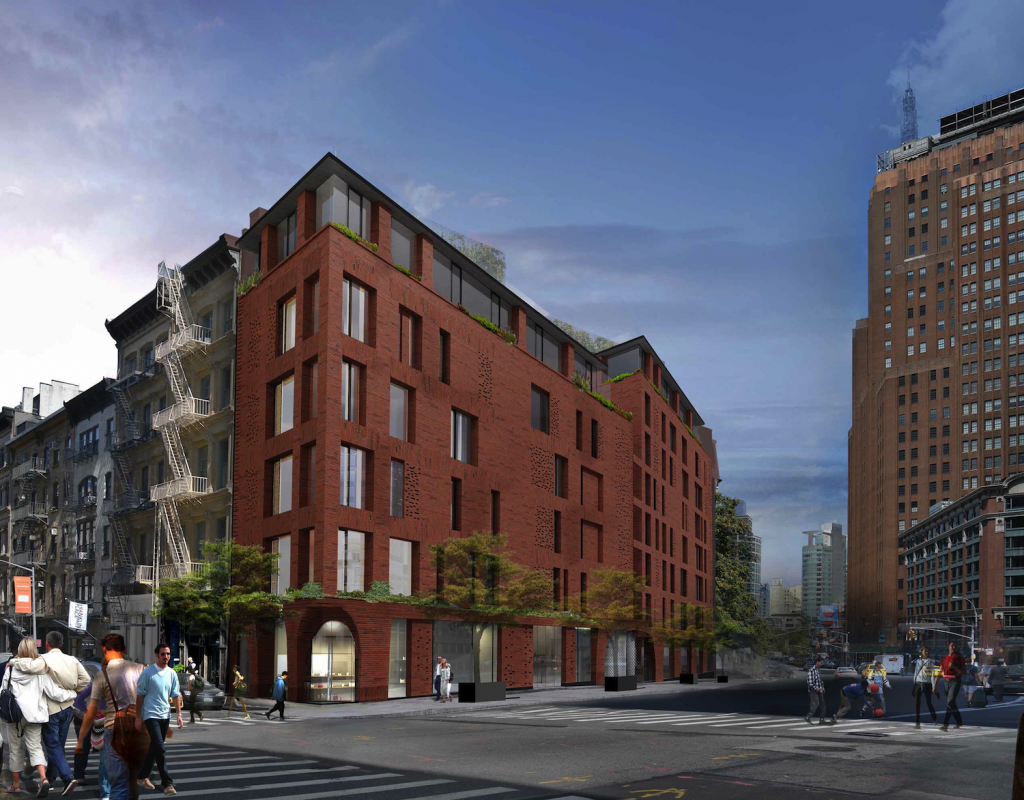
100 Franklin Street
What is 100 Franklin’s most narrow point and how did this play into configuring layouts for the project?
We always look for innovative and exciting design solutions in all of our projects, which is what attracted us to 100 Franklin. The site was created when Sixth Avenue was extended south in the 1930s, literally slicing through this part of Manhattan. That created a series of irregularly shaped parcels of land, and many decades of confusion regarding what to do with them – the site is comprised of two triangles, so they literally come to a point(s).
100 Franklin was previously a parking lot, but the location is exceptional with over 200 feet of frontage on a double wide avenue fronting both Avenue of the Americas and Church Street in TriBeCa, so we knew we could do something extraordinary with the site. At its narrowest point the building is 2 feet wide, and that inspired our designers to create something entirely unique in TriBeCa involving a series of interior spaces connected to exterior green plantings. It’s very, very special.

180 East 88th Street. Rendering by DDG
Why has building an as-of-right development on 88th Street been so fraught with red tape, and do you think the actions of the City have encouraged NIMBY sentiments in the vicinity and elsewhere?
As with each of our projects, we always listen to constituent concerns and endeavor to understand all points of view. Throughout the entirety of the development process 180 East 88th has received all required approvals from the New York City Department of Buildings and is in full compliance with all zoning regulations. We are proud of the building we are developing and believe we are bringing an architecturally distinctive building to the Upper East Side that will enhance the City’s beautiful and ever-evolving skyline.
The project continues to perform very well, garnering the attention of both local and international buyers. We look forward to the building’s completion in 2019.
DDG is known for its in-house development and design process. What are the positives and negatives of this, and do you see yourself using more out-of-house architects in the future, or keeping things as is?
For us, real estate is all about controlling the experience. DDG’s integrated model is one of the company’s more known and defining characteristics. By managing various aspects of the process – acquisition, design, construction, development and asset management – we’re able to retain the greatest control over our projects and take them from conception to reality. This affords us the
ability to ensure each of our projects features the highest form of quality and craftsmanship.
Of course, managing all aspects has challenges – you’re tasked with every decision and are more deeply involved in each element of the project. You’re thinking on macro and micro levels simultaneously, which can be quite difficult. This extensive in-house expertise has served us well to-date and enabled us to differentiate ourselves within the industry.
That said, we don’t have to be nor do we try to be all things to all projects. Our goal is to bring the best resources to bear across our portfolio whether that be from internal or external sources. We frequently pair our internal teams with external partners and push forward for the best result.
For example, on our five San Francisco projects we’ve worked with five talented Bay Area architects and in Palm Beach we are working with South Florida based designers and renowned hotel and hospitality designer Alexandra Champalimaud, which is very exciting. We have a similar strategy of partnering with the best and brightest on the construction side.
What Manhattan neighborhoods are you most optimistic about for price appreciation and retention over the next few years?
We’re always looking for opportunities in new neighborhoods that will show price appreciation and there is no such thing as a bad neighborhood for investment. As the long-term value of Manhattan real estate continues to increase. It’s about identifying the right opportunity at the right time where you can do something unique and special.
Keeping the above in mind, following the transportation (subway) lines is always a safe bet and going to the next stop out may not be fool proof but has stood the test of time.
What is your favorite neighborhood in Manhattan?
That’s a difficult question to answer. Downtown, Uptown, East-side, West-side – all of those areas and the neighborhoods they comprise have great attributes.
Currently, I’d have to say NoHo. It’s where I live and where we built our inaugural project. The cobblestones on Bond Street are charming and the architecture is incredibly interesting. There’s a mix of new and old materials, designed by a fabulous mix of architects – some local and some from around the globe, all interspersed within a landmark district. From a retail and restaurant perspective it’s lively enough without being overwhelming. I just hope it stays that way!
What kinds of improvements would you like to see to New York City’s general infrastructure?
As an investor, developer and a resident of New York City, I can tell you that infrastructure is one of the most important things for the City’s continued growth and economic development. The MTA is a lifeline for many New Yorkers and a conscious effort needs to be made to make the necessary improvements to this integral system to ensure the city can continue to move forward on a global level and welcome new people and opportunities. The subway is critical.
Infrastructure, though, can mean many things and extend beyond the traditional. There’s a lot of opportunity to take New York City into its next phase by integrating different “smart city” practices that help optimize city functions and drive economic growth. Great examples are smart parking meters, which help drivers find a spot via an app rather than circling the block, or smart traffic management to help traffic flow, such as congestion pricing.
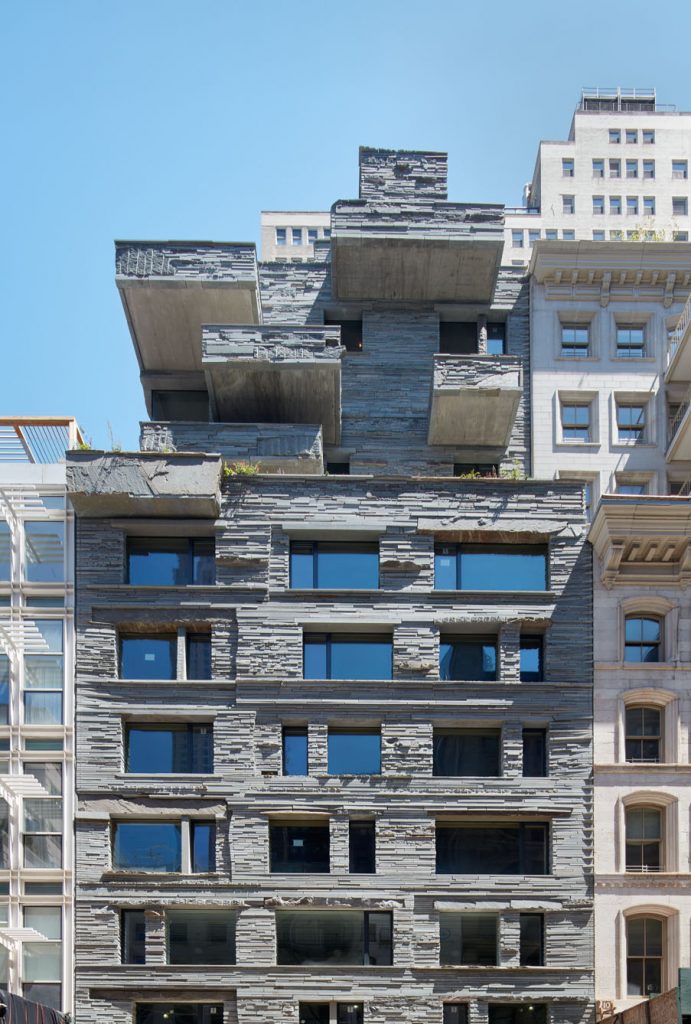
12 Warren
A focus on more and continued sustainability would also be a huge boon for New York City. It’s becoming increasingly important to utilize green practices whenever possible, which is something we value and do. Each of our buildings focuses on green elements to make our designs beneficial for both users/residents and the planet. Whether it’s the reuse of rain water, green roofing and gardens, LEED or WELL building standards, or aesthetic plantings, we all have a responsibility to slow and reverse the impact to the environment.
When it comes to raising more revenue for the city, do you think congestion pricing or a millionaire’s tax is more feasible — or do you think there are options not yet considered that could be substantially more beneficial?
While we all recognize the need to create more revenue for the City to support infrastructure and smart growth, determining how exactly to do that, let’s leave to the elected officials. But, congestion pricing would help reduce traffic… and fewer cars is definitely good for the environment.
Subscribe to YIMBY’s daily e-mail
Follow YIMBYgram for real-time photo updates
Like YIMBY on Facebook
Follow YIMBY’s Twitter for the latest in YIMBYnews

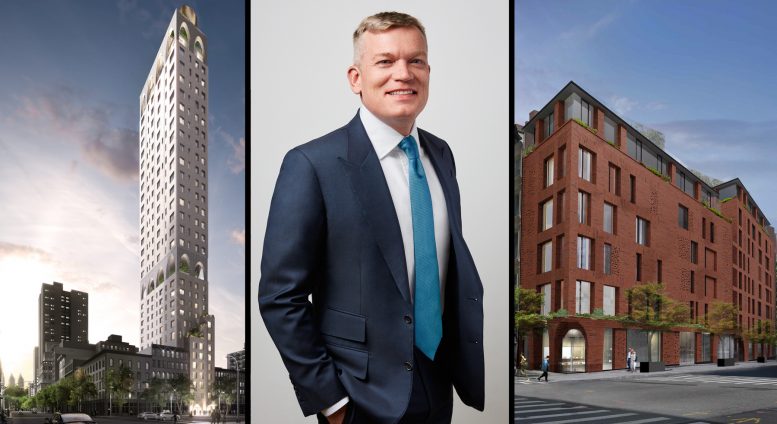
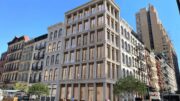

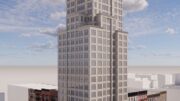

Please pardon me for using your space: Task with ten questions passed. (Thank you)
I have mixed feelings about super-luxury developments, but the ones pictured in this article are a good collection of buildings. They all add visual interest to the skyline and the streetscape.
180 East 88th is not in compliance with all zoning issues. They somehow manipulated the zoning rule and changed address to comply with city. This is a mere sliver of land that DGD took advantage of for their own selfish greed and they have no regard for the residents who live here. 180 is a behemoth of a building and will forever change the landscape of the upper east side. Shame on the city for letting this happen. For all those who care about Manhattan and preserving residential neighborhoods, make sure to contact your local council member and urge them not to support measures to eliminate the 12 FAR cap. We need height limits on residential buildings.
I think someone owes bucks to Frank Lloyd Wrigh’s estate. “Falling balconies” looks too much like Falling Waters.